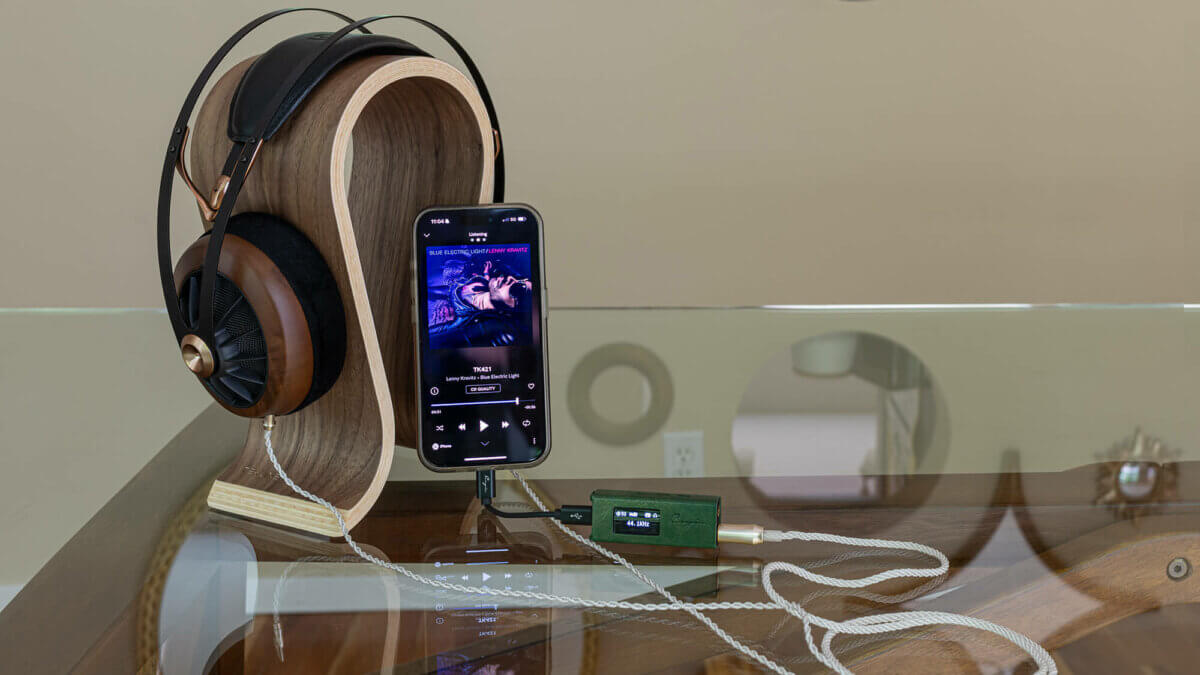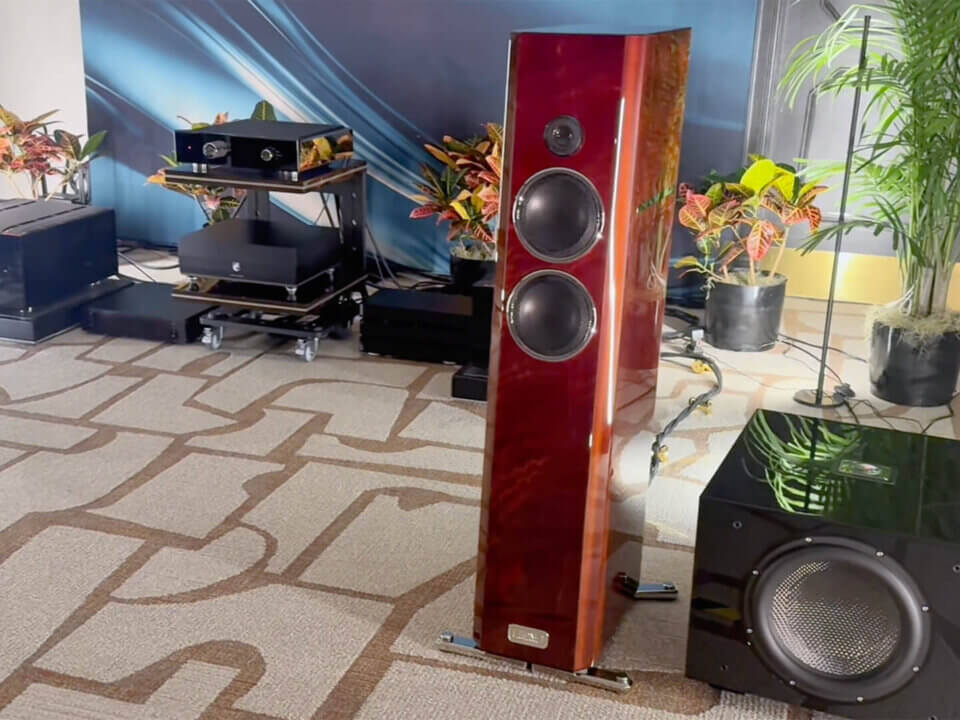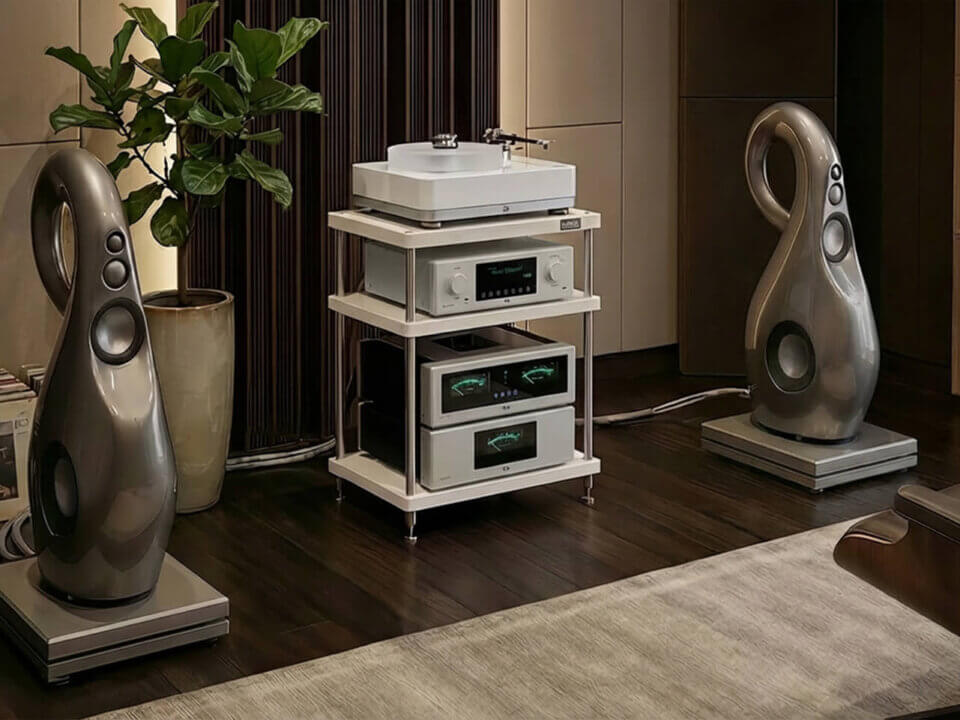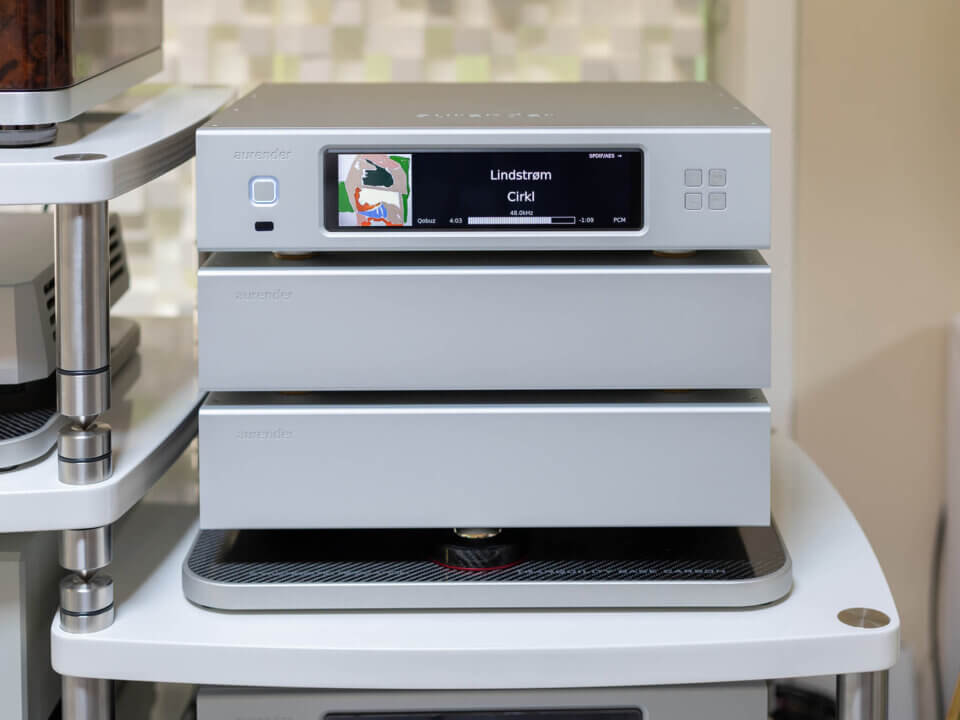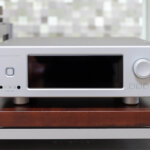
The Aurender AP20 Integrated All-In-One
February 9, 2024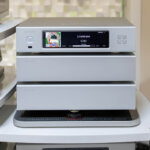
Comparing the Aurender N50 and Aurender N30SA
August 29, 2025I’ve had a love/hate relationship with headphones. Good headphone systems do an exceptional job in retrieving microdetail and delivering transient response and dynamic presentation, but I tend to find myself disappointed in the lack of spatial presentation compared to live music or a high end two-channel system. No matter what, I feel the music plays inside my head. Also, I’ve historically found the portability aspect to be not that portable because I gravitated towards cans that were harder to drive. This typically required stationary headphone amp setups or a heavy brick of a digital audio player (DAP) that made me not want to be mobile.
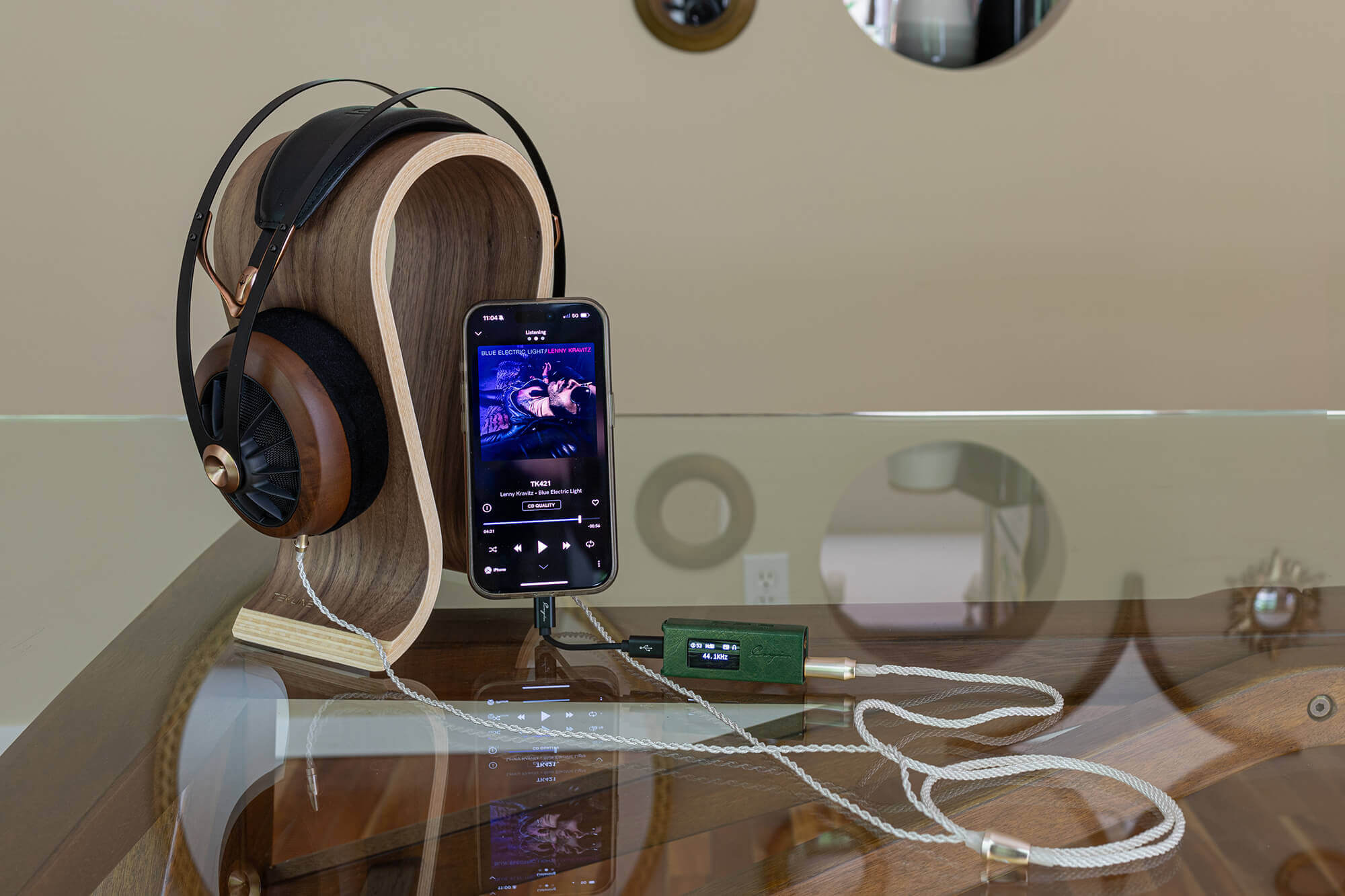
First, Some Context
I’m no stranger to high end headphones. I remember buying my first pair of open back Sennheiser headphones when I was producing electronic music 25 years ago. Those headphones revolutionized my understanding of headphone listening as it presented a soundstage larger than any typical closed back cans while also integrating with the ambient environment around me. Many headphones later, when I lived in NYC with decent disposable income, I purchased a pair of Audeze LCD-2 planars with a Schiit Lyr 2 and over the years went up the line to the LCD-3 and $4,000 LCD-4, experimenting with other brands like Sennheise, Focal, Hifiman, and RAAL along the way. I’ve used a variety of high-end headphone amplifiers, with the $9,650 T+A HA 200 in house for demo over a few months, and the $3,500 Violectric HPA-550 Pro being a recent personal reference. I had even bought a $3,300 HiBy RS8 DAP (digital audio player) to encourage mobility away from my stationary headphone setup, but it was too much of a brick to tote around easily.
At the end of 2023, I decided to sell my Audeze LCD-4, Violectric HPA-550 Pro, and HiBy RS8 to move additional funds into Bliss Hifi. After all, while the performance in that combination was pretty good, I still found myself rarely listening to them, largely because Audeze LCDs are quite heavy and caused me neck and shoulder pains with prolonged use. I also generally prefer two channel listening given the more accurate spatial presentation of the soundstage, so I sought to listen to my reference system as much as I possibly could, even if late at night when my children were asleep.
This year at AXPONA, I came across Meze Audio and Ferrum Audio and was intrigued by their background stories, product offering, performance, and synergy. I did not hesitate to become a dealer for both brands. I was immediately enamored with the $4,000 flagship Meze Elite and spent the first month evaluating them against the $3K Meze Empyrean II and HifiMan HE1000-SE, all on the Ferrum WANDLA DAC, OOR Amp, and HYPSOS Power Supply. The Elite and Ferrum stack gave me a new reference to work from, with a sonic presentation that was full, warm, natural, spacious and detailed without fatigue. But the Elite were not alone in standing out in the Meze lineup, and as impressive as they are, they are not what this article is about.
Enter the Meze Audio 109 Pro Headphones
I’ve now had four pairs of Meze Audio headphones on display for the last month – the Elite, the Empyrean 2, the Liric 2, and the 109 Pro. Interestingly, the $799 Meze Audio 109 Pro has gotten the most use… by far. Much of the reason for continuing to go back to the 109 Pro was for sheer convenience and portability / mobility. Despite the 109 Pro not being quite as resolving and refined as the Empyrean 2 or Elite, I found it delivered an experience with no loss of musical engagement, and I wholeheartedly agree with Meze Audio’s positioning of the 109 Pro.
“109 PRO is a demonstration of our commitment to go beyond the faithful reproduction of sound to deliver pure emotion. It all started with a purpose – creating joy. It’s about letting yourself get lost in sound, about that intimate connection you have with your favorite artist, song or instrument, when all distractions are removed.”
Antonio Meze
In it’s default state, the 109 Pro are lightweight, exceptionally comfortable, and easy enough to drive with a mobile device (more on this later). It presented the opportunity to be truly mobile with great sound… something I hadn’t encountered in many years as most headphones required higher current, higher powered amplifiers. But in the case of the 109 Pro, I am now able to spend spring and summer evenings in bed, or on our new patio in comfort, breathing fresh air and looking at the stars while listening to great music.
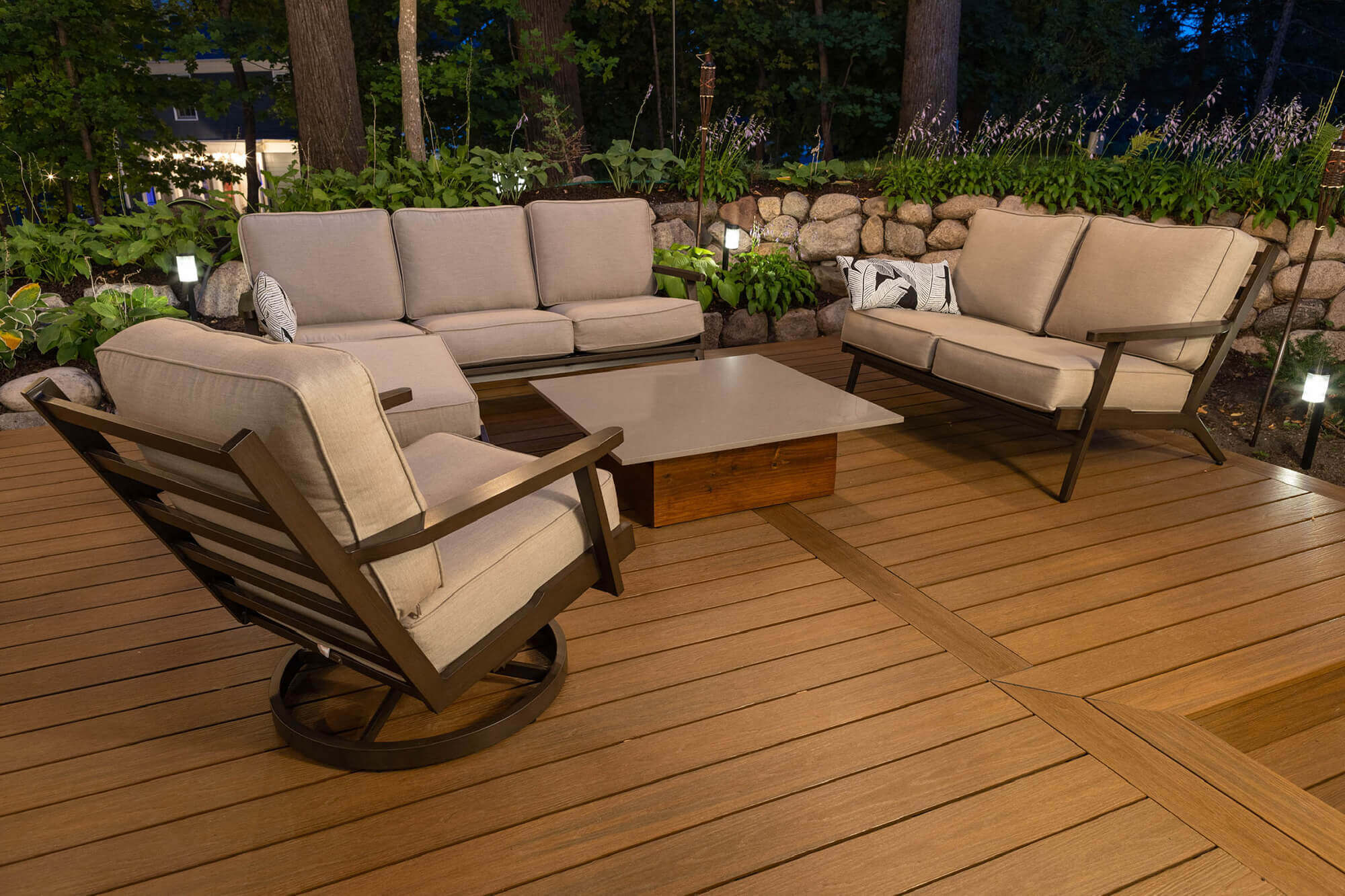
A Birds-Eye View of the Meze Audio 109 Pro
The 109 Pro arrive in an attractive box, and a semi-rigid carrying case found inside houses the headphones along with two oxygen free copper headphone cables, one with 1/4″ 3.5mm connector, and the other with a 4.4mm balanced Pentaconn connector. Upon opening, my first impression of the 109 Pro is a well-designed headphone with comfortable ergonomics and a gorgeous aesthetic. The earcups include high quality materials including walnut and cast zinc to provide a premium aesthetic while positively shaping a natural sound. The headband, made of manganese steel and vegan leather, automatically stretch and contract to the size of my head, and I’ve found that it results in a perfect fit where the earcups rest firmly, but lightly on my head. I never found the headphones to apply too much pressure or result in any discomfort in any way.
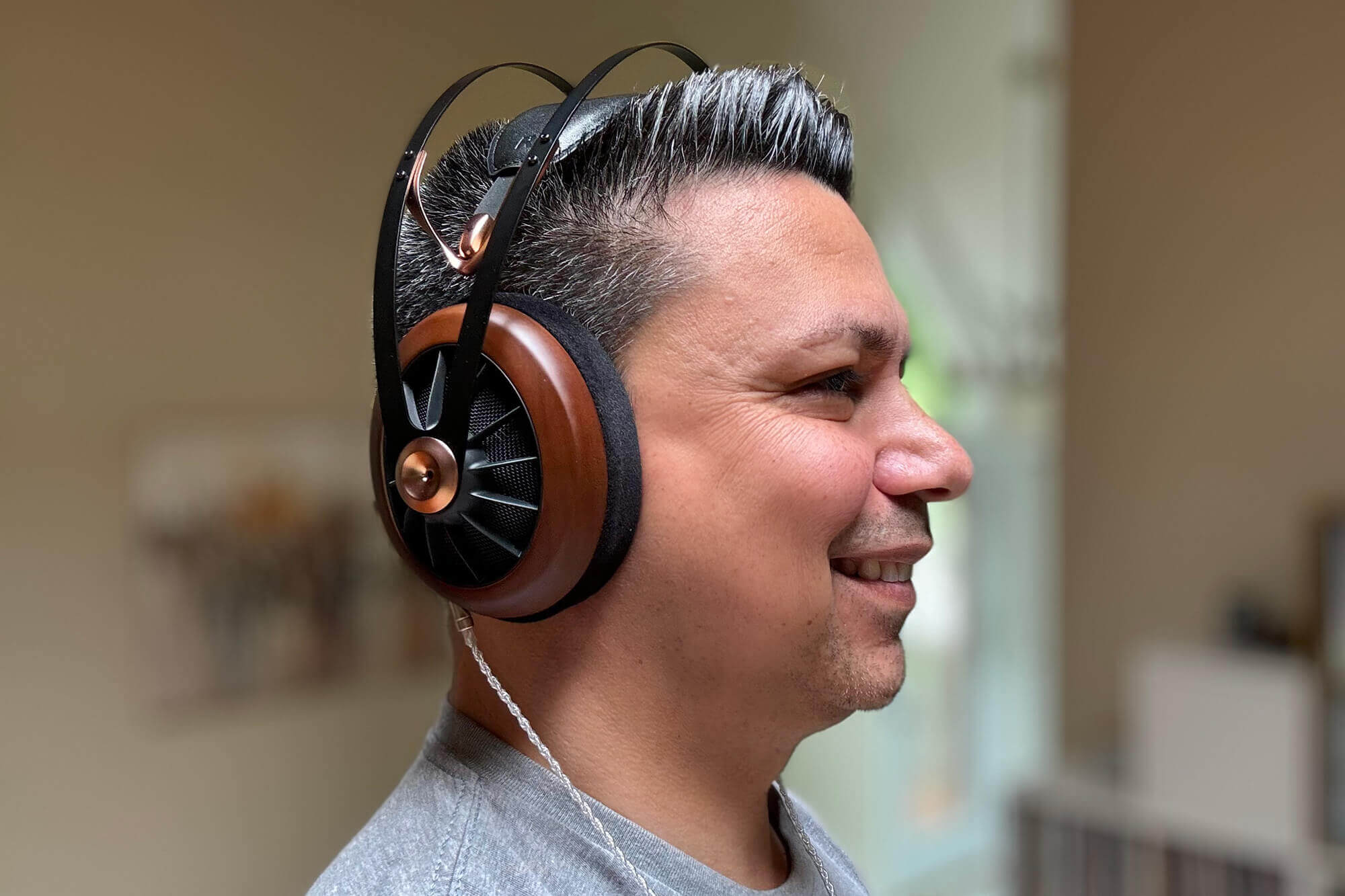
Despite the 109 Pro having true over-ear sized cups, the earcups are not the largest on the market, and the earcups are not as deep as some of the bulkier headphones available. Proportionally, I feel they got this pair perfect.
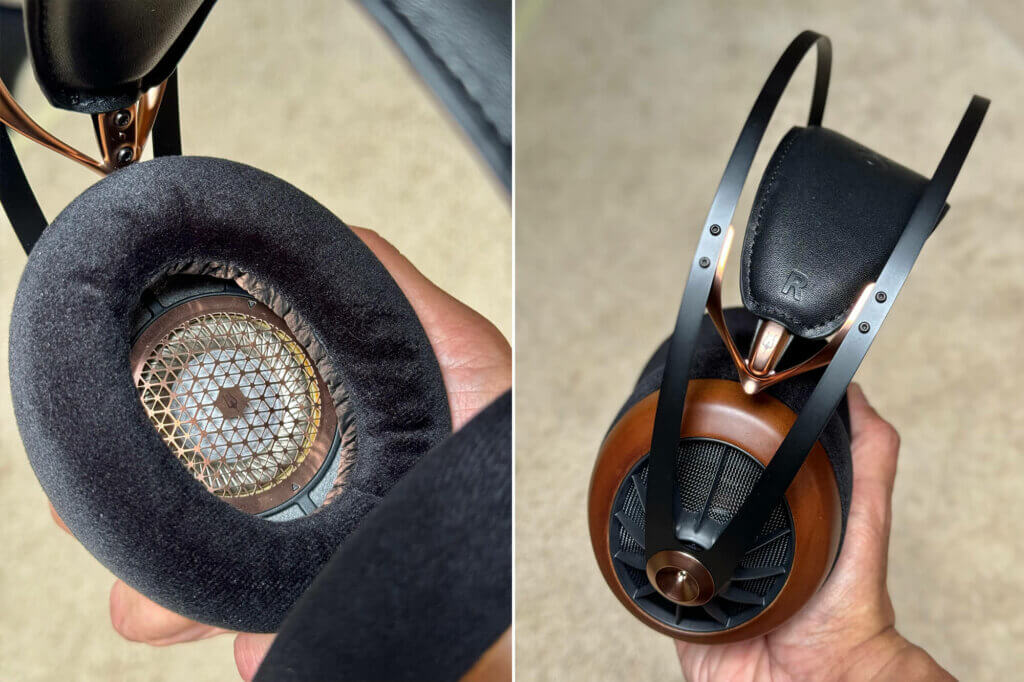
The 109 Pro is an open back dynamic driver design featuring Meze’s most open pattern to date consisting a spider-shaped structure and acoustically transparent grill. This means they will leak sound out so others will hear, just as you can hear the outside world without much restraint. This allows the sound to breathe beyond the boundaries of the earcups, resulting in more accurate bass and tonality, while preserving detail retrieval and microdynamic transients.
The dynamic driver is exceptionally light and stiff, designed as a w-shaped 50 mm diaphragm with an ultra-thin surround made of a beryllium-coated semicrystalline polymer. Assembled with ultimate precision, the driver delivers a lightning fast transient response and added durability compared to conventional alternatives. and aligned ergonomically in the earcups aligned to the listener’s ear. Each earcup features an aluminum frame and copper zinc stabilizers to reduce unwanted resonances, further preserving the clarity that is evident upon first listen.
Each earcup is outfitted with velour pads, providing an optimal seal to create natural sound. My ears never got hot, sweaty or tired of being enclosed in the 109 Pro, even after many hours of listening.
One of the standouts of the 109 Pro, beyond its superb design and sonic performance, is the ease of driving it. With a rating of 50 Ohms and 112dB sensitivity at 1 Watt, these headphones are truly mobile friendly and sound better than any low impedance, high sensitivity headphone I’ve ever heard. This means I finally found the ability to have great sound on the go.
Sonically speaking, I truly appreciate the 109 Pro’s performance. Bass is punchy and plentiful without getting in the way of the rest of the frequency spectrum. The midbass and midrange has a magical, natural bloom and the higher frequencies deliver crisp, but non-fatiguing detail. This combination is quite seductive without sounding euphonic. Its sonic signature is reminiscent of Audezes, which were my previous personal references, but I’ve found Meze headphones overall aren’t as dark by default. While they contain a similar punch, density, and midrange magic, Meze headphones as a whole can be more resolving overall compared to their Audeze counterparts by class.
Scaling Up with the Cayin RU7
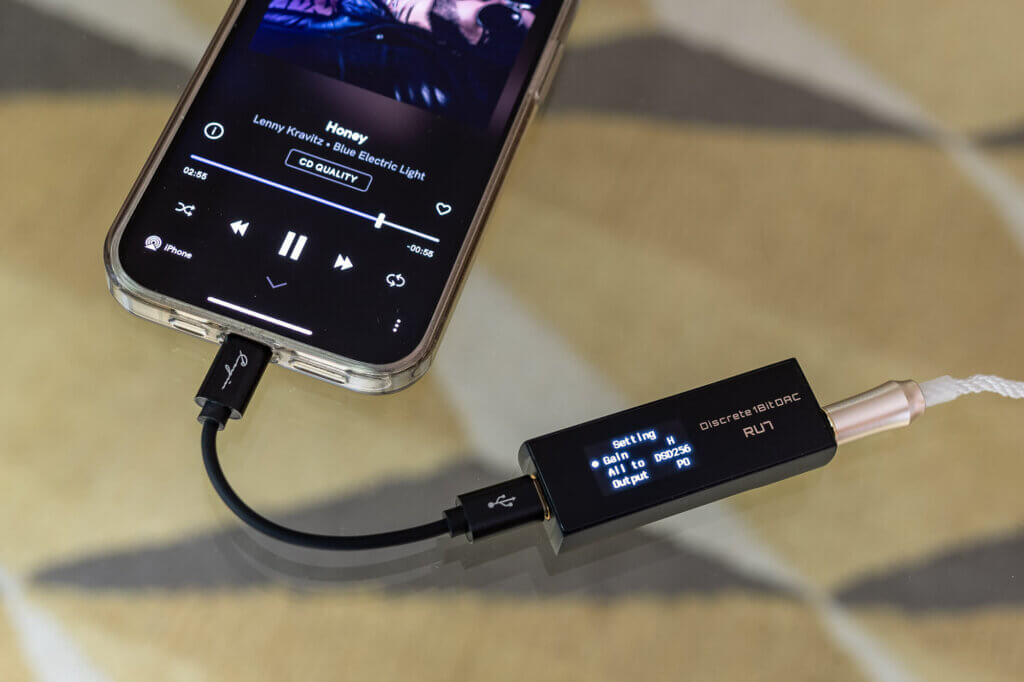
While the 109 Pro sounds delicious using its stock cable into a mobile device, I decided to purchase a Cayin RU7 portable DAC/Amp ($289.99) to elevate sonic performance to the next level. In addition to the sonic performance afforded by the RU7, it also allowed for both 3.5mm and balanced 4.4mm cables to be utilized, which gave me the opportunity to use Meze’s silver-plated oxygen free copper upgrade cables ($129). Being able to now compare the stock cable and the upgraded balanced cable, I heard a more lively presence and improved speed and decay across the entire frequency spectrum.
Returning to the RU7, I found it to be the perfect pairing to the Meze 109 Pro. The RU7 is a 1-Bit R2R DAC design that can output all audio to DSD256. It is not a high-powered amp compared to many desktop headphone amplifiers, maxing out with a 400mW output through the 4.4mm balanced connection, but it surely has high current and quality power for a pocket-sized dongle. It’s well more than enough for the 109 Pro.
I’m not a dealer for Cayin and purchased the RU7 based on reviews that mentioned it to be amongst the most neutral, natural sounding portable DAC / amp on the market. With the 109 Pro, I find the Cayin RU7 to bring an even greater sense of analog realism, solidity and engagement. The sound clearer, more lush, and is more controlled and confident overall compared to plugging the headphones straight into the mobile phone. In these cases, it was clear that my iPhone on its own demonstrated no shortage of power, but the RU7 demonstrated how much its more sophisticated DAC and quality amplifier was able bring a greater sense of realism and involvement with the music. Some reviews mentioned the RU7 may have less presence in the treble region, but utilizing the silver-plated copper upgrade cables, I found the sound to be balanced and resolving all the way through.
The Meze Audio 109 Pro and Cayin RU7 sound exceptional together, and I highly recommend them as a pair.
Pairing with the Ferrum ERCO 2 DAC / Amp
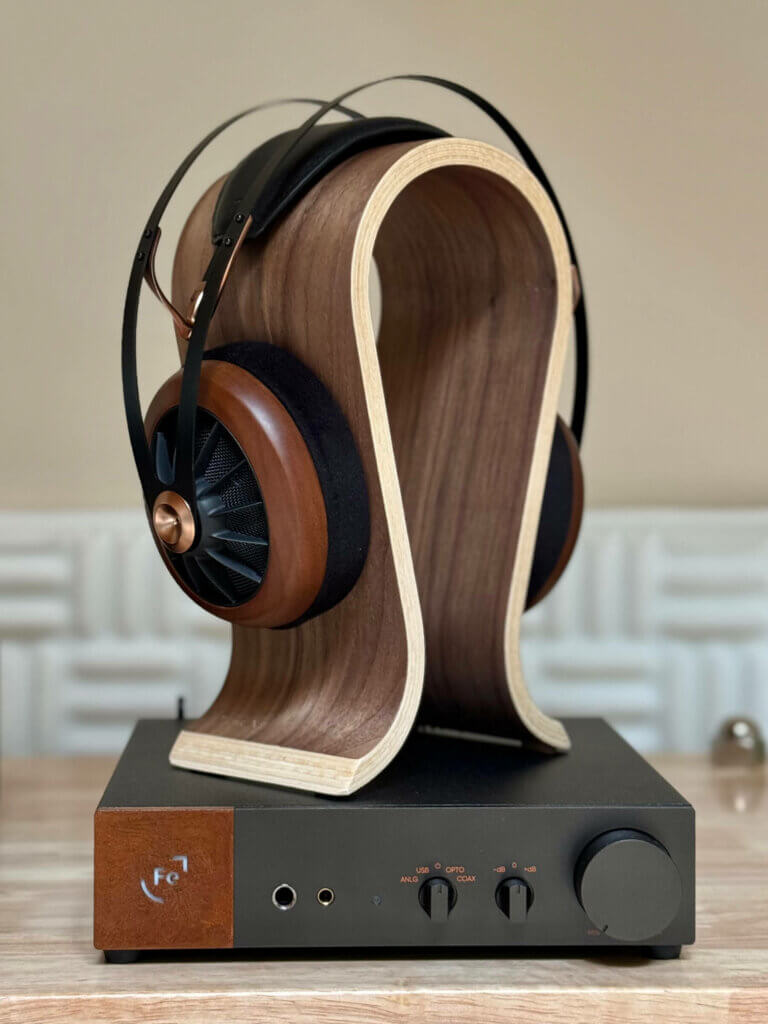
While I evaluated the flagship Meze Elite with a more sophisticated Ferrum Audio stack, I decided to test my 109 Pro with the Ferrum ERCO 2 ($1,795), a slimmed-down version in a single chassis containing a DAC and amplifier. With this combination, the soundstage enlarged both in width and depth proportions while maintaining the natural sonics heard in the Cayin RU7. Tonal density and harmonic richness were matched, with slightly improved decay and transient response. Just as I fell in love with the Meze Elite and full Ferrum stack at AXPONA, I fell equally in love with the Meze 109 Pro and Ferrum ERCO 2 at a much lower price point.
What I loved about experimenting with this pairing is that it showed me how the 109 Pro sounds excellent playing lossless quality music straight out of a mobile device, but in both scenarios of the Cayin RU7 and Ferrum ERCO 2, the 109 Pro gracely improved sonically, becoming more confident, radiant, and refined each step of the way.
Conclusion
The 109 Pro is a beautiful and highly capable pair of headphones, and at $799, it is accessible to a much larger market than many high end headphones often costing $2K+. Its sonic presentation is breathtaking, and its ergonomic comfort and ability to use it with almost any electronic device with scale makes it my top pick for “if you could keep only one”. I highly recommend you pair it with the Cayin RU7 and the optional silver-plated copper upgrade cable. For a total just north of $1,200, you’ll end up with a blissful headphone setup that may not be paralleled by other combinations unless you spend exponentially more.
If you’ve made it this far, thank you for reading. I’d be curious to hear your thoughts and am happy to answer any questions you might have in response.

